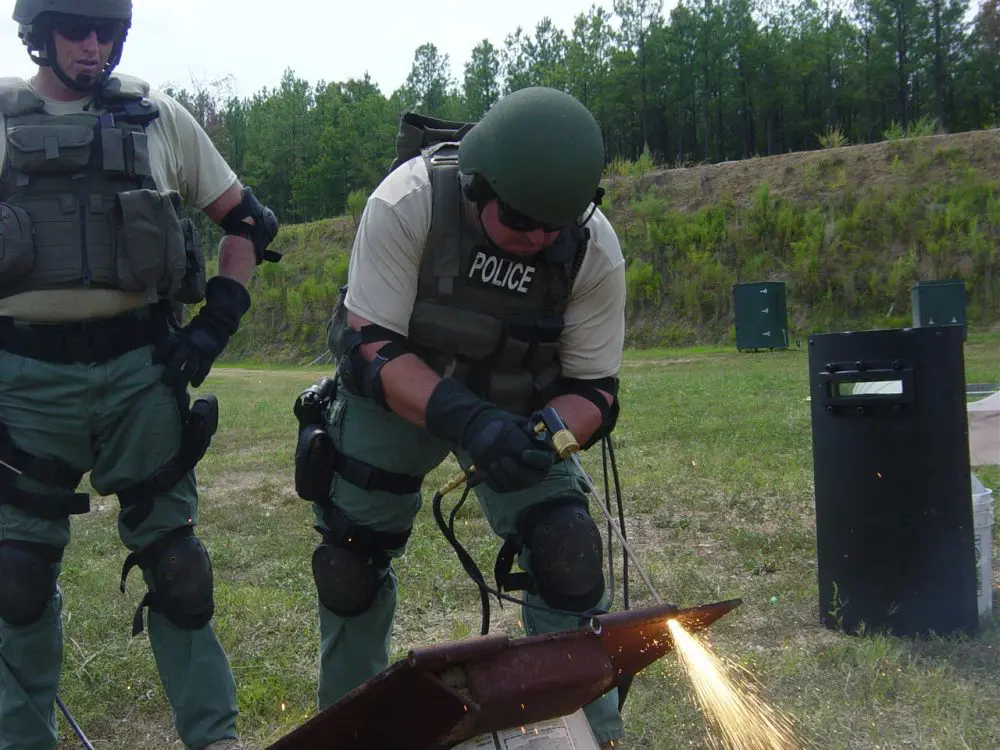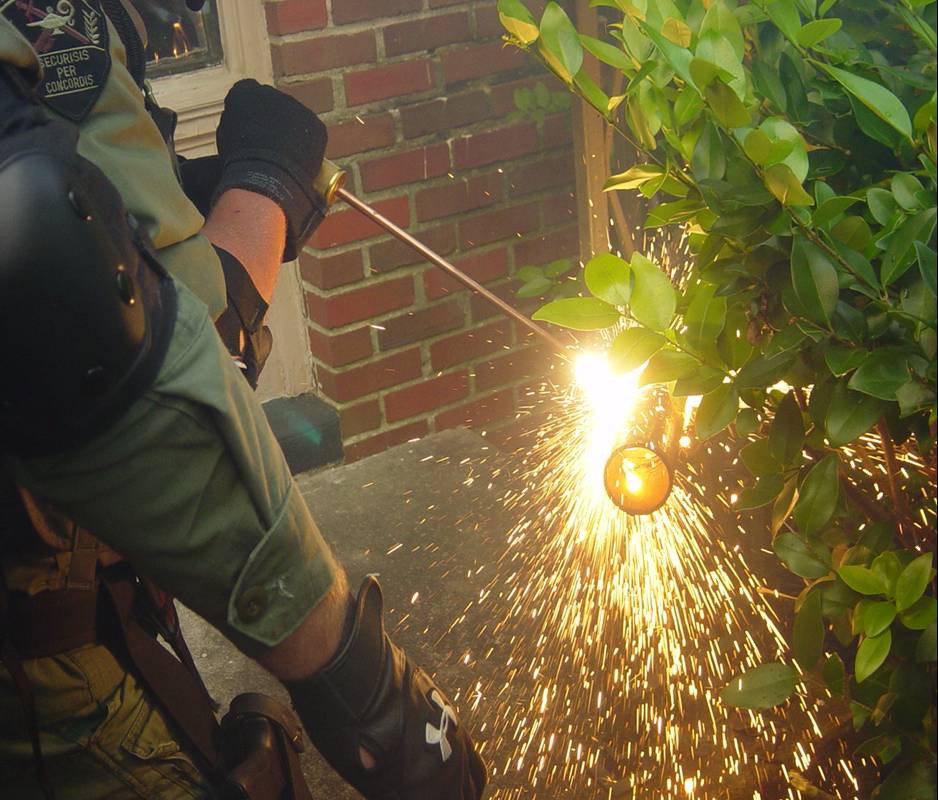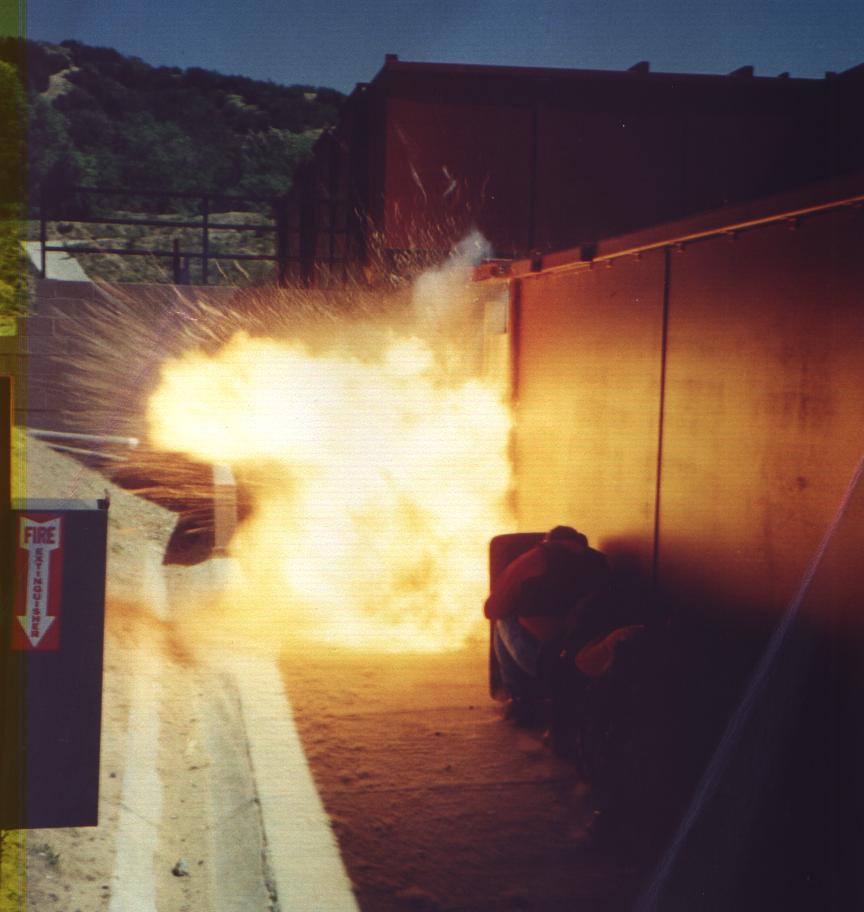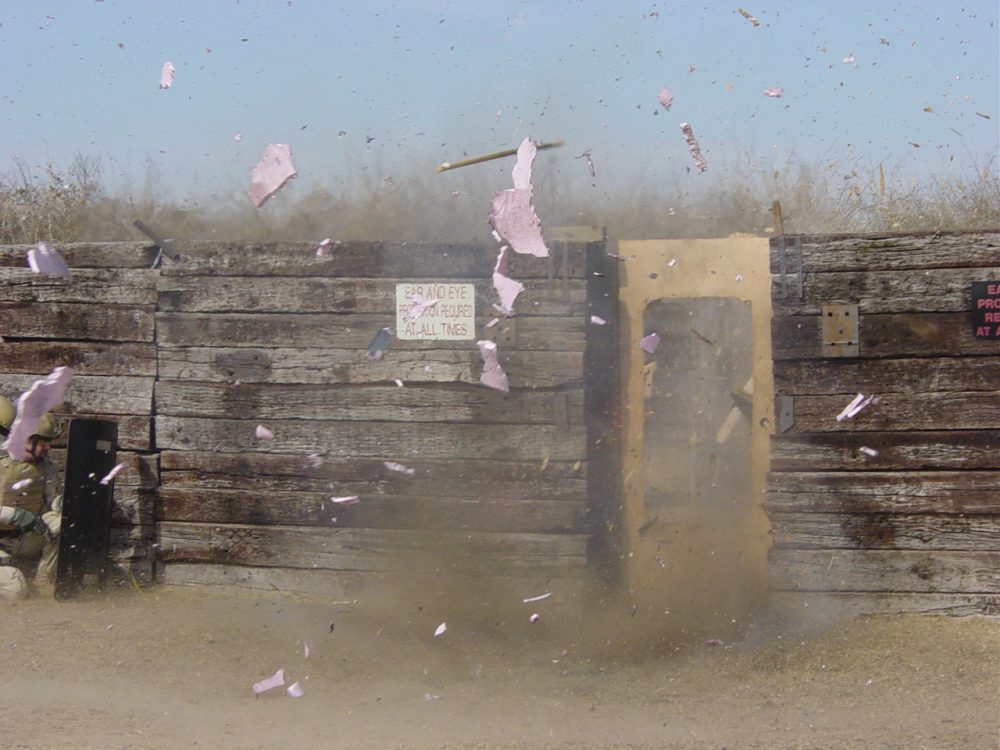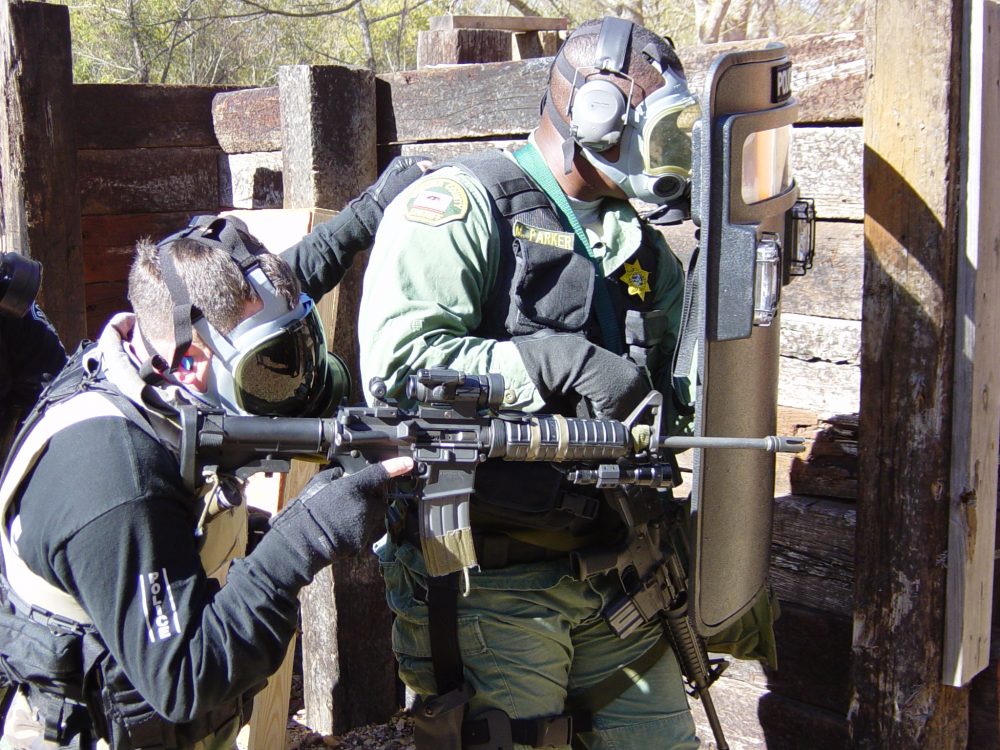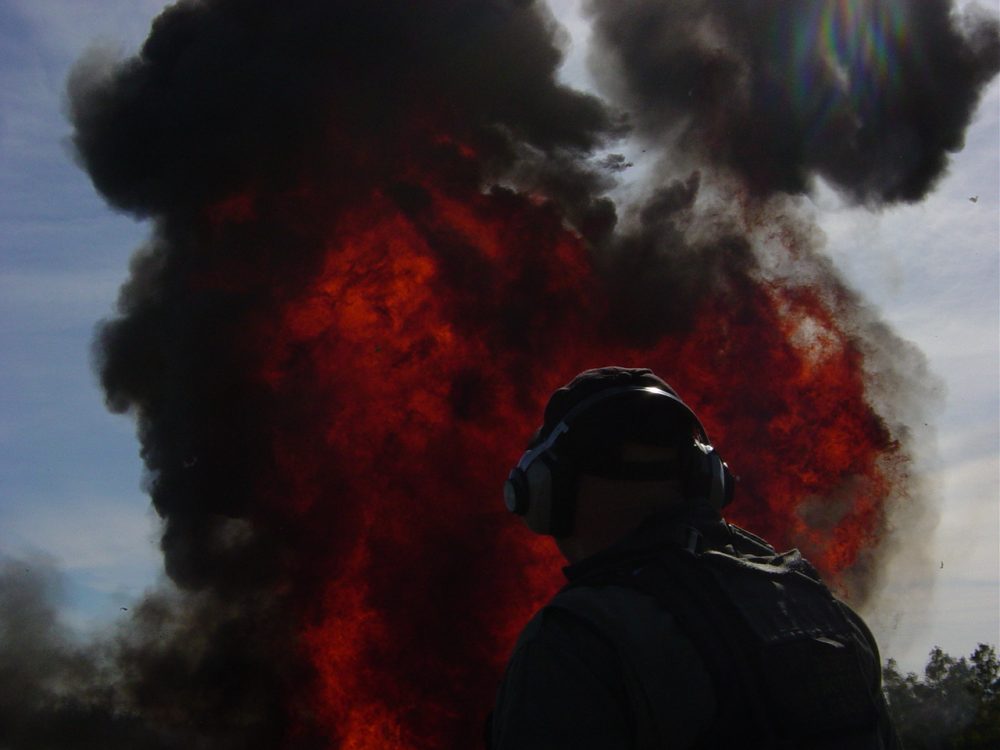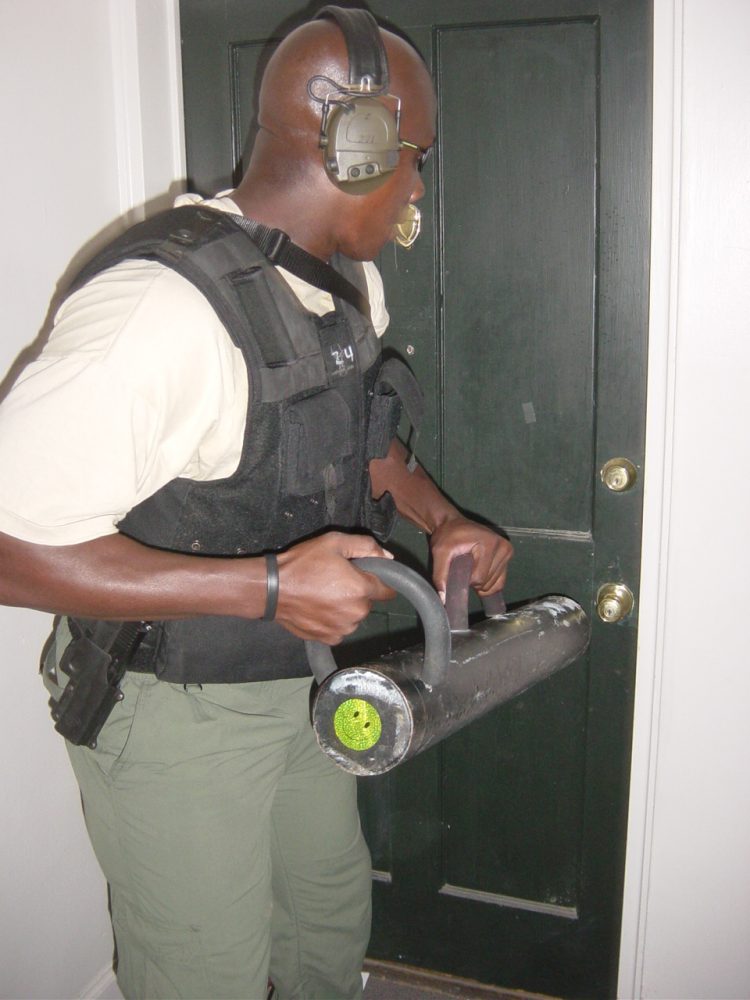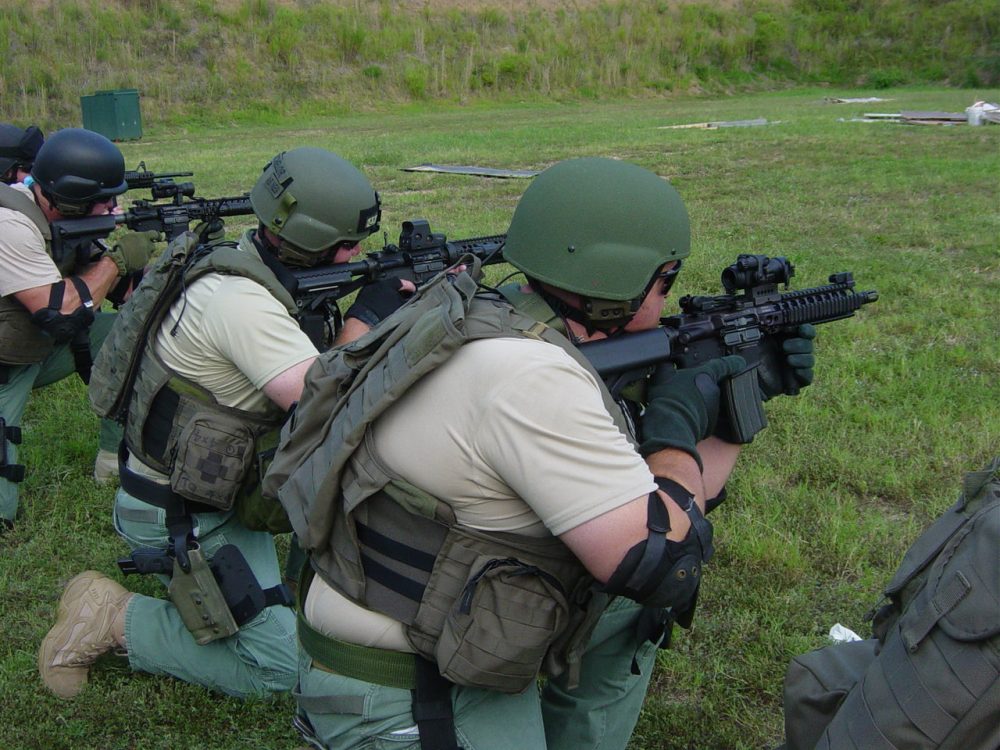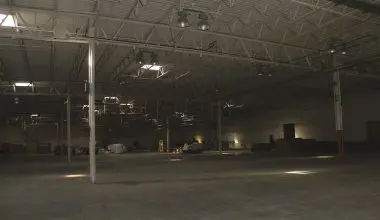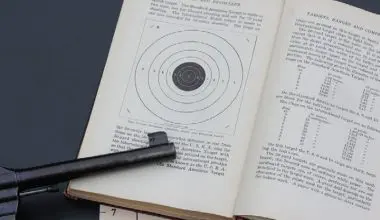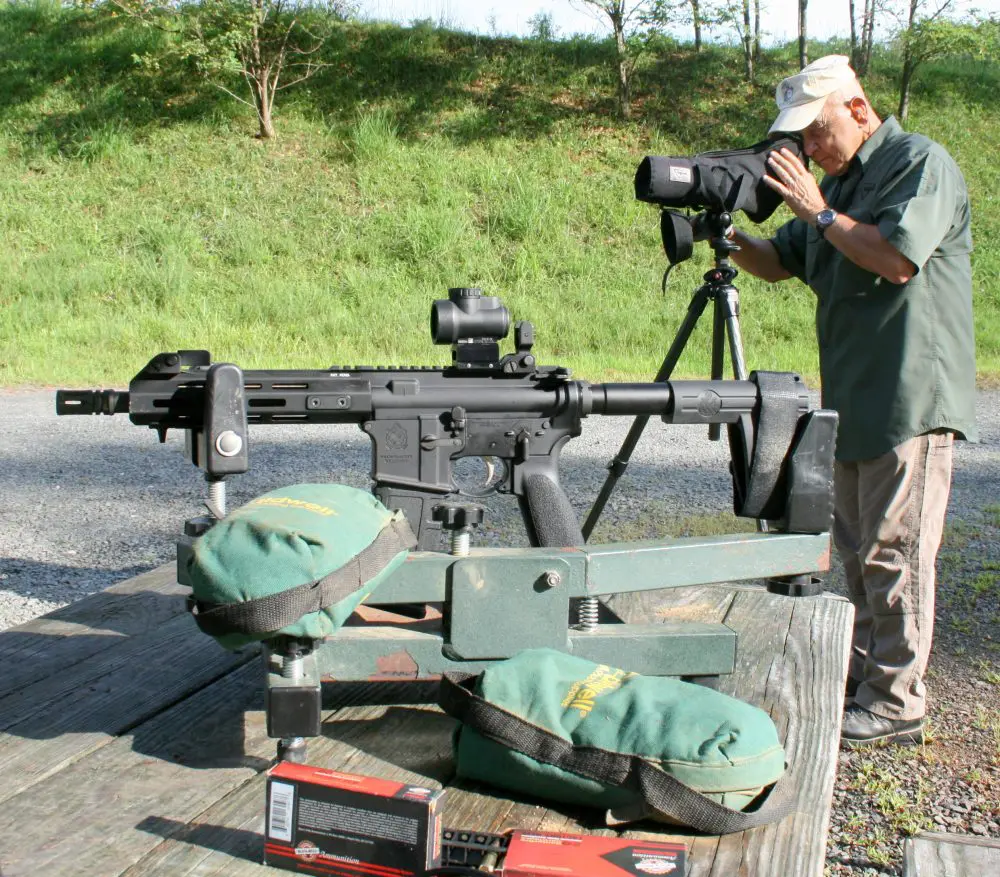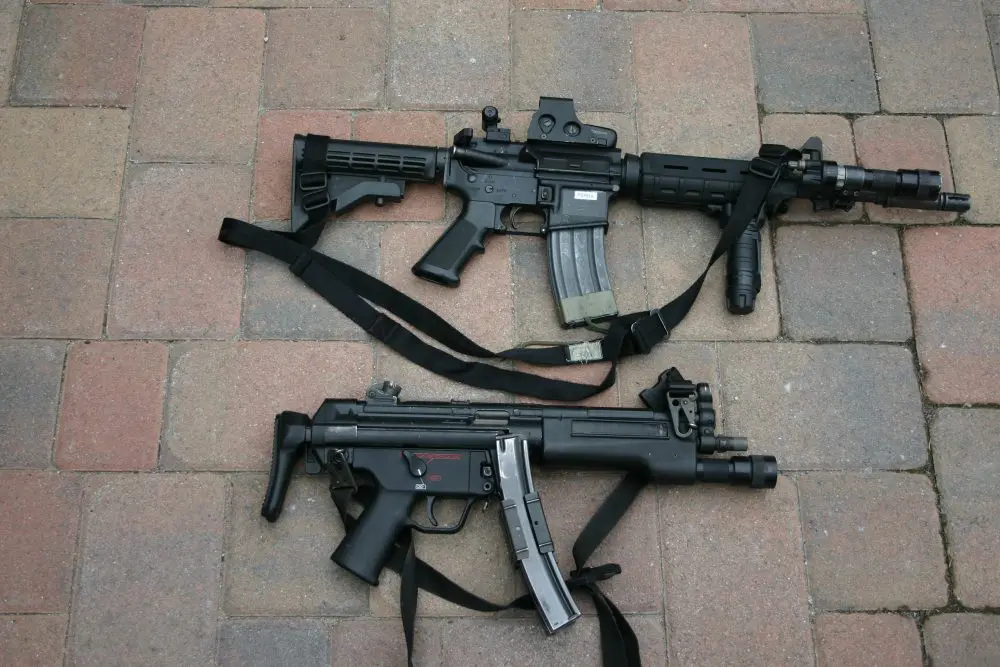The threat posed to America’s law enforcement community has never been greater. Ranging from global Islamic terrorist groups to high-level narco-terrorist factions, these threats are more severe than ever before. Today’s departments must train for a higher level of incident response than in years past. One critical tool for a cutting-edge SWAT team to possess is Explosive Breaching.
As with any tactical option we have, explosive breaching is a tool to be used only when the situation warrants it. There is a great deal of misinformation out there regarding this subject. In this article I will simply attempt to offer a few thoughts concerning justifying explosive breaching capabilities to your administrators. Before we enter into the subject of dynamic breaching, let’s start with the three operational components that compose a properly formed and fully prepared SWAT Team.
Mechanical breaching tools allow us to make entry into most conventional targets, but what if the target turns out to be unconventional?
Table of Contents
SNIPERS / INT GATHERERS
This element is critical for gathering intelligence and reporting back real-time sitreps to the command post. Whether it is in the form of a man on a rifle viewing the unfolding events through his scope, or operators emplacing viewing/listening devices, the more we know about the current situation in and around the stronghold, the better we can plan for and rehearse our entry and assault. In addition, the snipers will provide security overwatch for the team on their approach and if necessary can deliver precision fire on target to either neutralize or suppress the foe. Statistically, snipers seldom take shots on subjects, yet I am sure that no one can argue that they are not an outstanding asset to any crisis response team.
ASSAULTERS
The mission of the assaulters is to clear and dominate the stronghold. Of course they should be well-versed in weapon skill sets, physical fitness, arrest and control techniques, CQB, building assaults, vehicle takedowns and aircraft assaults, as their mission dictates. The assaulters are the heart and soul of the tactical team because they are the ones who close with and neutralize and/or control all subjects to bring successful resolution to the situation. The simple fact is that they are unable to accomplish this facet of the operation if the breachers fail to open the way for them.
Broco exothermic torch is excellent aid to mechanical/thermal breaching assets.
BREACHERS
Clearly, the breachers have a very important job. They must affect entry into the stronghold. This element needs to be proficient in all aspects of penetrating into any given objective. We should never put on blinders and focus only on traditional methods of mechanical breaching through residential and commercial doors. The primary reason that mechanical breaching will not always work is the fact that if the suspects are highly motivated, they may have had time to fortify their perimeter. There have been far too many officers killed or gravely wounded while beating on a door with a ram! You might have the biggest, baddest team of entry men, but they are worthless if they cannot get into the stronghold to do their job. What happens most often is that the ram is simply assigned to the biggest or most motivated member of the team to smash the door in. Trained breachers need to possess specialized skills to get the team into a multitude of targets. They need to be familiar with a wide range of targets and tools in order to properly support their team.
Broco torch will cut through some serious steel in short order, but it still takes longer than an explosive shot.
TYPES OF BREACHING
Mechanical
Just as we have varying levels of force progression with suspects, we also have a tier of force progression when it comes to dynamic breaching. First and foremost is the mechanical breach. This is obviously the method employed daily by teams all over the country during warrant service. Under mechanical breaching we include our rams, sledgehammers, Halligan tools, bolt cutters, quicky saws and exothermic torches. The downsides are that most of these methods are noisy, time consuming and not always guaranteed. If the suspects have barricaded a door without our knowledge, we are apt to get into serious drama. We need to have our operators spending the least amount of time up on the door as possible.
Shotguns
Next is the shotgun. This technique is effective only on lighter targets where we can see the hinges and/or lock mechanisms. There are many good products currently on the market that allow us to maximize the effectiveness of shotguns for breaching doors, metal rebar and other targets. The limitations of utilizing shotguns for door breaching is that there may be other lock mechanisms on the other side of the door that we are not aware of. This scenario can lead to dead operators and dead hostages.
This fireball took place in milliseconds and there was no issue of it igniting the surrounding structure or area.
Explosives
Lastly we arrive at the explosive breaching option. Whoa there, partner! This is the part that makes the administrators nervous. We have heard it all before: “You’re not blowing up any houses in my city!” “Explosive Breaching!?! You want to burn the neighborhood down?!” The key here is for properly trained breachers to select the right charge for the target. The databases for charges have become very refined over the last decade. They continue to get smaller in size, but still effect positive entry. What must be ingrained into the minds of all explosive breachers is to use the smallest amount of explosive necessary to affect a positive breach. Many SWAT team leaders and operators often meet with huge resistance when they attempt to get explosive breaching capability added to their SOPs. Here are the top three liability concerns of the administrators and brass.
Fire Hazard
Unlike low explosives such as black, smokeless and flash powder, high explosives in their raw form do not start fires. When I say raw form, I mean without any fragmentation jacket or penetrator jacket on them. When I say this during classes, I know many people doubt this statement. Images usually come to mind, such as the Federal Building in Oklahoma City, or HUMVs burning overseas after they have been hit by an improvised explosive device (IED). The building in Oklahoma City was simply knocked down by the blast wave from the 4,800 pounds of ANFO that was inside the truck. The fire came from the disrupted gas and electric lines.
This debris consists of nothing more than Styrofoam and light bits of 1×2 pine slat. Average distance of debris blast-back is 15 yards.
Vehicles sometimes burn from the fuel in the tank and from the red-hot fragmentation that comes off of munitions and some IEDs. This is not a concern when we are talking about performing breaches on residential and commercial buildings. High explosives detonate so quickly that there is no time for them to transfer their heat to the surrounding area. Additionally, they also consume a large amount of the oxygen in the immediate area of the detonation, which also impedes the potential for fire.
I have personally witnessed and supervised documentation of many thousands of explosive breaching shots going off, and I have never seen one structure fire result from the breaching charge. I have seen dozens of fires result from deployment of flash bangs. There is a very real hazard from fire with these devices because they employ low explosive in the form of either flash or smokeless powder. That is why the team always needs to carry one or two small fire extinguishers. Once again, high explosives detonate at such a high velocity that there is no time for them to transfer their heat.
Structural Damage
When high explosives detonate, they give off their forces at 90-degree angles. What this means is that, for most conventional breaching charges, the vast majority of all the pressure is bouncing off of the target. Our mission is merely to drop down a door or to open an entry port through a wall. If we use the proper amount of explosive, there will be minimal to no damage to the surrounding doorframe or wall.
Well-trained SWAT team is versed in all manner of tactical operations. When is the last time your team executed a live op with shields and gas masks? Just because we are seldom called upon to perform a certain skill does not mean we don’t train for it!
Injury to Personnel
Same as on any high-risk entry, all personnel must wear their protective gear. This means during training as well as on operations. The use of shields to protect the team from the blast wave allows them to stack as close as possible to the entry point. If we use the proper amount of explosive, the chances of injury to any occupants inside the room from debris are minimal. I can assure you that many a role player has sat in a chair (with proper protective gear on as a matter of common sense) while a door has been explosively removed from the frame ten feet in front of them. These individuals received no damage—other than an adrenaline high that will be hard to reproduce.
Mention of explosives usually conjures up images such as this.
SAFE CALCULATIONS
As mentioned, pressure emitted by any explosive will give off its forces at 90-degree angles. What this means in basic terms is that the blast wave will move away from the point of detonation. If the team is outside in open areas, the blast pressure wave dissipates very quickly into the atmosphere. The potential of injury to the team when breaching inside enclosures, however, does exist. We must follow our safe calculations at all times. We will always establish the Net Explosive Weight (NEW) for any charge we construct. This calculation of NEW is important for us to be able to justify our decision of why a certain charge was used on a target. In addition, it allows us to calculate the safe stacking distance for the team and also to calculate our internal overpressure if we are breaching inside of a building. All breachers must be well-versed in these calculations.
Very uncomfortable position to be in—especially if you hit that door and realize there is a solid barricade behind it.
WHY DO WE NEED EXPLOSIVE BREACHING?
Defeating Barricades
The terrorist and criminal element worldwide has been getting more and more sophisticated when it comes to barricading their houses and strongholds. There are targets that have been fortified to the extent that conventional mechanical breaching has struggled or failed completely to gain entry. With proper intelligence, we can construct a charge that will defeat any barricade.
Achieving “Shock Action” For The Assaulters
I believe that we are all in agreement that the proper deployment of flash bangs helps to save the lives of officers, hostages and suspects. Explosive breaching will give us this same advantage, along with the added benefit of getting the door out of the way—now!
High level of weapon skill sets is critical for any Tactical Team, but it is only one of many that we may be called upon to utilize.
Protecting The Lives Of Officers And Hostages
As stated previously, many a good man has been killed or wounded while fruitlessly pounding on a door that bad intel said was not fortified. Every second that the team spends on the breach point gives the enemy more time to regain their composure and activate their defense plan. The safety of our entry men, which depends upon Speed/Surprise and Shock Action, is sacrificed if they are stalled at the entry point.
A thought for administrators: pay a little now, or pay huge later on, both financially and ethically, if any officers and men under your control are wounded or killed because they were denied a capability that they should have had. To quote a Kiwi whom I know, “It’s better to possess a skill and never use it, rather than wish you had it when a serious incident occurs.”
[Max Joseph is the founder and training director of both the Tactical Firearms Training Team (TFTT) and the Direct Action Group. Joseph has been involved in special operations and training for the last 24 years. He served as the Senior Instructor for the Tactical Explosive Entry School from 1993-2005, both in the United States and Brazil. He also served as an Explosive Entry and CQB instructor with the U.S. Department of State for the Anti Terrorism Assistance Program. Joseph is recognized as a subject matter expert in explosives for tactical breaching and other special operations. He may be contacted at [email protected].]
